By David H. Lippman
Apprised of an approaching LCM full of VIPs, the beachmaster surveyed his busy dock full of ships loading and unloading troops and supplies at Red Beach on the Philippine island of Leyte. His authority over the beach absolute, he decided the ongoing work was more important than the “brass hats” and denied their request to land at the dock.
The biggest “brass hat” in the Pacific–General Douglas MacArthur—was not amused. Along with Filipino President Sergio Osmeña, trailed by his staff officers and the usual gaggle of reporters, MacArthur was forced to wade through surf nearly up to his knees, his steely gaze fixed angrily on the offending beachmaster.
On seeing his photo in the newspaper resolutely wading ashore, MacArthur realized its public relations value and would replicate the scene at all future amphibious landings.
More importantly, the arrival of MacArthur and the 24th Infantry Division honored his pledge to return and liberate the Filipino people from Japanese captivity. In a radio broadcast, U.S. rifle fire crackling behind him, he declared, “People of the Philippines, I have returned!”
The return was set in motion during a July 1944 meeting in Hawaii between President Franklin D. Roosevelt and his top two Pacific commanders, MacArthur and Admiral Chester Nimitz, who wanted to invade Formosa, then Japan, bypassing the Philippines and all of Southeast Asia.
But MacArthur had personally promised to liberate the American commonwealth of the Philippines and was keenly aware that while Filipino guerrillas were battling Japanese occupiers, American POWs who had survived Bataan were starving and enduring torture.
Roosevelt, who was seeking reelection during wartime, needed victories in the Pacific against America’s hated Japanese enemy.
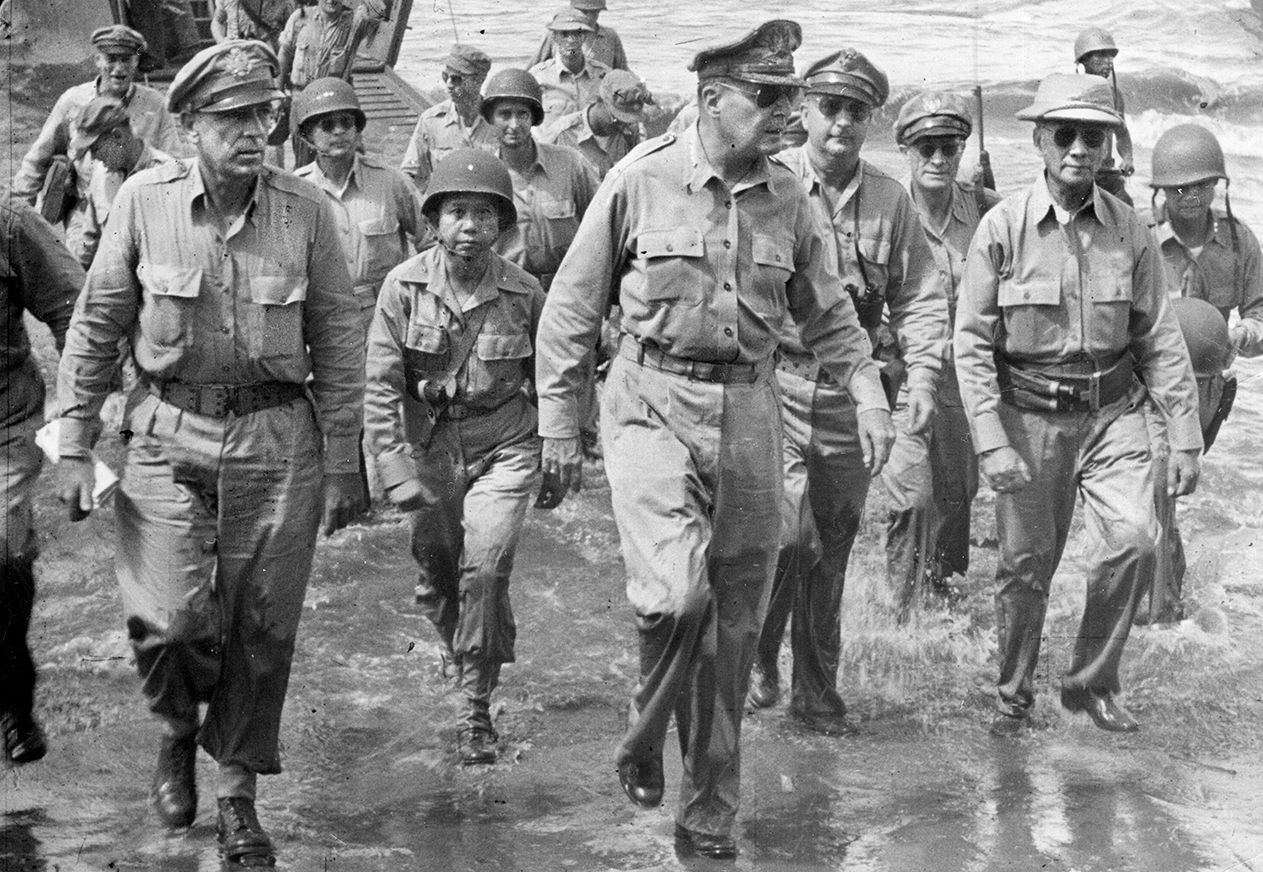
MacArthur proposed moving on Leyte, then Luzon, and Nimitz agreed on the necessity of taking and holding the critical air and ground bases in the Philippines and neutralizing Japanese forces there.
MacArthur tapped Prussian-born General Walter Krueger to lead the assault with his U.S. 6th Army. A former enlisted infantryman, he was a meticulous planner and administrator who recognized that in the miserable terrain of the Philippines in general, and Leyte in particular, supply was everything.
The easternmost island in the Philippines, Leyte is 115 square miles and had a population of 915,000 in 1944. Leyte Gulf in the east was the natural place to invade, near the rice and corn belts of Leyte Valley. MacArthur planned to land at Tacloban, build airfields, and then attack the mountainous regions beyond. With four Army divisions going in on L-Day and three more to follow, Krueger’s 200,000 men constituted a powerful force. It was backed by the 2,500 combat aircraft of Gen. George F. Kenney’s Far East Air Force and not one, but two massive American battle fleets: the 3rd Fleet under Adm. William F. Halsey and the 7th Fleet under Adm. William Kinkaid.
The U.S. assault on Leyte began in September 1944 with a series of dogfights greater in number and intensity than the Battle of Britain. The airmen of Halsey’s 3rd Fleet pounded air bases in Formosa, Okinawa, and the Philippines. Japanese officers reported scores of downed U.S. planes and ships. Although untrue, celebratory lantern parades were held in Tokyo.
None of this propaganda impressed General Tomoyuki Yamashita, the “Tiger of Malaya,” who conquered the British colony with 55,000 men against a British force twice his size. For expressing his views on war and politics too loudly to his superior, Field Marshal Hisaichi Terauchi, Yamashita had been sent to an obscure command post in Manchuria for two and a half years.
With the Americans menacing, the Philippines needed a better commander than Lt. Gen. Shigeru Kuroda, who had neglected defenses in favor of geisha girls, prostitutes, and golf.
Told he was going to the Philippines, the 59-year-old Yamashita remarked, “So it’s come at last, has it? Well, my going won’t change anything. It’s my turn to die, isn’t it?”
Yamashita arrived in Manila, the Filipino capital, to take over the 14th Area Army—Japan’s term for an army group—and discovered that his old foe, Terauchi, was his new boss. Worse, Yamashita inherited a weak staff and weaker divisions, gone soft by years of occupation duty. Yamashita had no control of the air forces defending the islands, commanded by Lt. Gen. Kyoji Tominaga. The Imperial Japanese Navy had its own agenda, which it did not share with Yamashita.
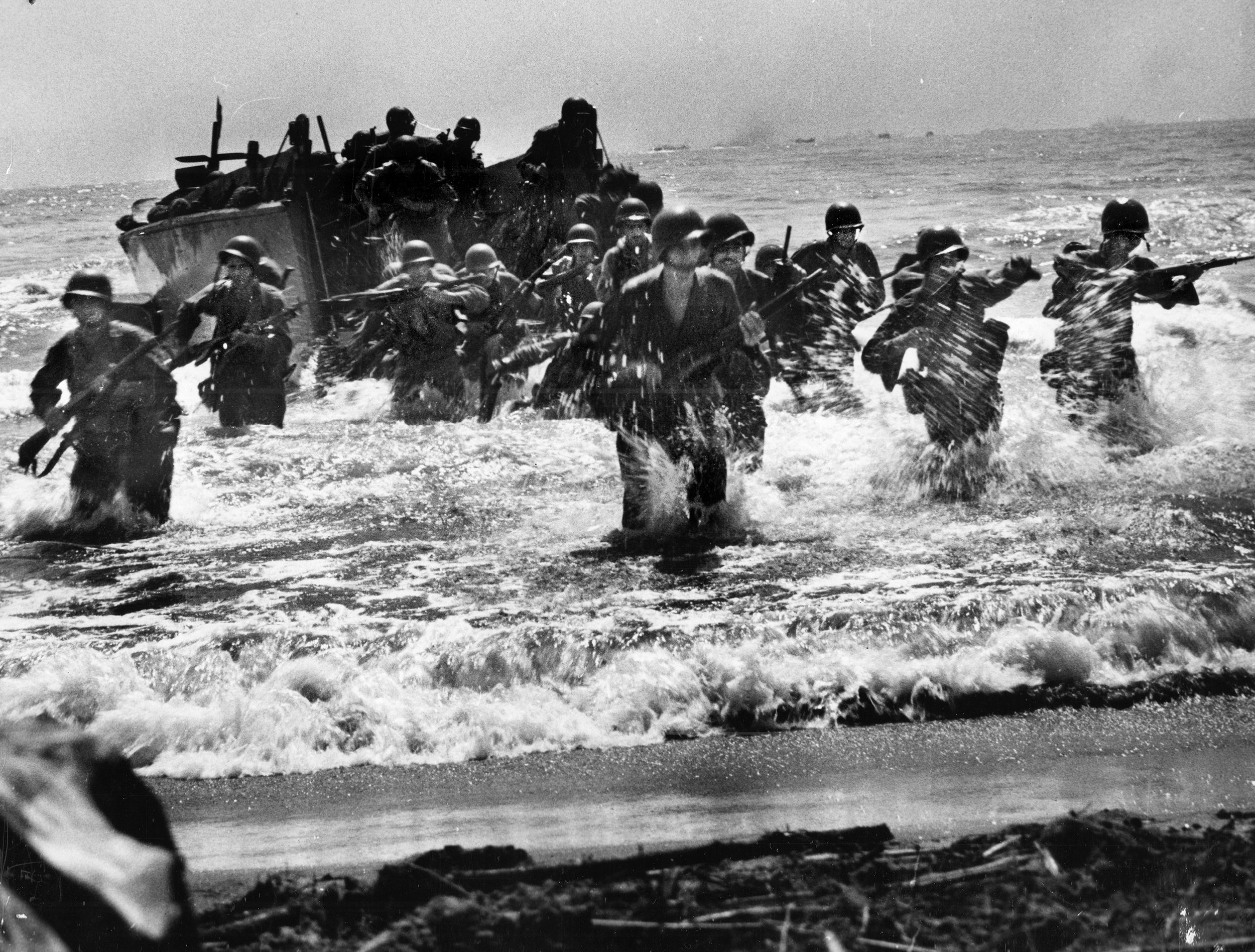
The Japanese troops defending the Philippines were unprepared to face the Americans. They lacked ammunition, food, and equipment. In all, Yamashita had 300,000 troops scattered around the Philippines, 20,000 of them in Leyte, most in Lt. Gen. Shiro Makino’s 16th Infantry Division, part of Lt. Gen. Sosaku Suzuki’s 35th Army. While the division had conquered Bataan, its current troops—draftees from Kyoto and Osaka—were raw. Suzuki’s headquarters was on the nearby island of Cebu, so he could not immediately oversee the defense.
On October 18, the American fleets bore down on Leyte. That same day, the Imperial Navy ordered nearly its entire fleet to sea under a complex plan to annihilate the Americans.
Early on the 20th, the American fleet arrived off Leyte and began shelling and bombing an 18-mile line from San Jose to Dulag and landing four divisions.
The four divisions divided into four corps headed for Leyte: X Corps in the north with the 24th and 1st Cavalry for Red Beach, and 96th and 7th in the south under XXIV Corps, aimed at Orange, Blue, Violet, and Yellow Beaches. The 6th Army went ashore at 10 a.m.
The XXIV began moving inland with the 1st Cavalry Division attacking on its right to seize Tacloban and its airfield. On the left at the southern end, Violet and Yellow Beaches fell to the 7th Infantry Division, veterans of Attu and Kwajalein, and the 96th Infantry Division had grabbed Dulag by noon.
Private Joe Hoffrichter, manning a flame-thrower, landed at 10:30 on an M-8 self-propelled howitzer. If the howitzer’s guns could not silence a bunker, Hoffrichter was to use his flamethrower. He came under Japanese artillery fire and found his fellow men of the 34th Regiment dug in on the beach. The M-8 was blocked by a tank trap and could not silence the fourth of four bunkers. Hoffrichter had to do the job.
He reached the dirt and log emplacement, shoved the flamethrower’s nozzle into a hole and fired three bursts. “The screams I heard were of intense agony. The machine guns were silenced and the stench of burning flesh drifted through the openings where the guns were,” he said later. “I vomited on the spot.” His team took out 16 bunkers—four more by Hoffrichter, who vomited each time.
At the southern end of the beach, the 96th Infantry was making its combat debut. But the men had been well trained, enduring long jungle marches and mountain climbs in New Guinea. The battleship USS Tennessee, a Pearl Harbor survivor, and three cruisers battered Japanese defenses with 2,720 rounds of ordnance before the 96th Division went in.
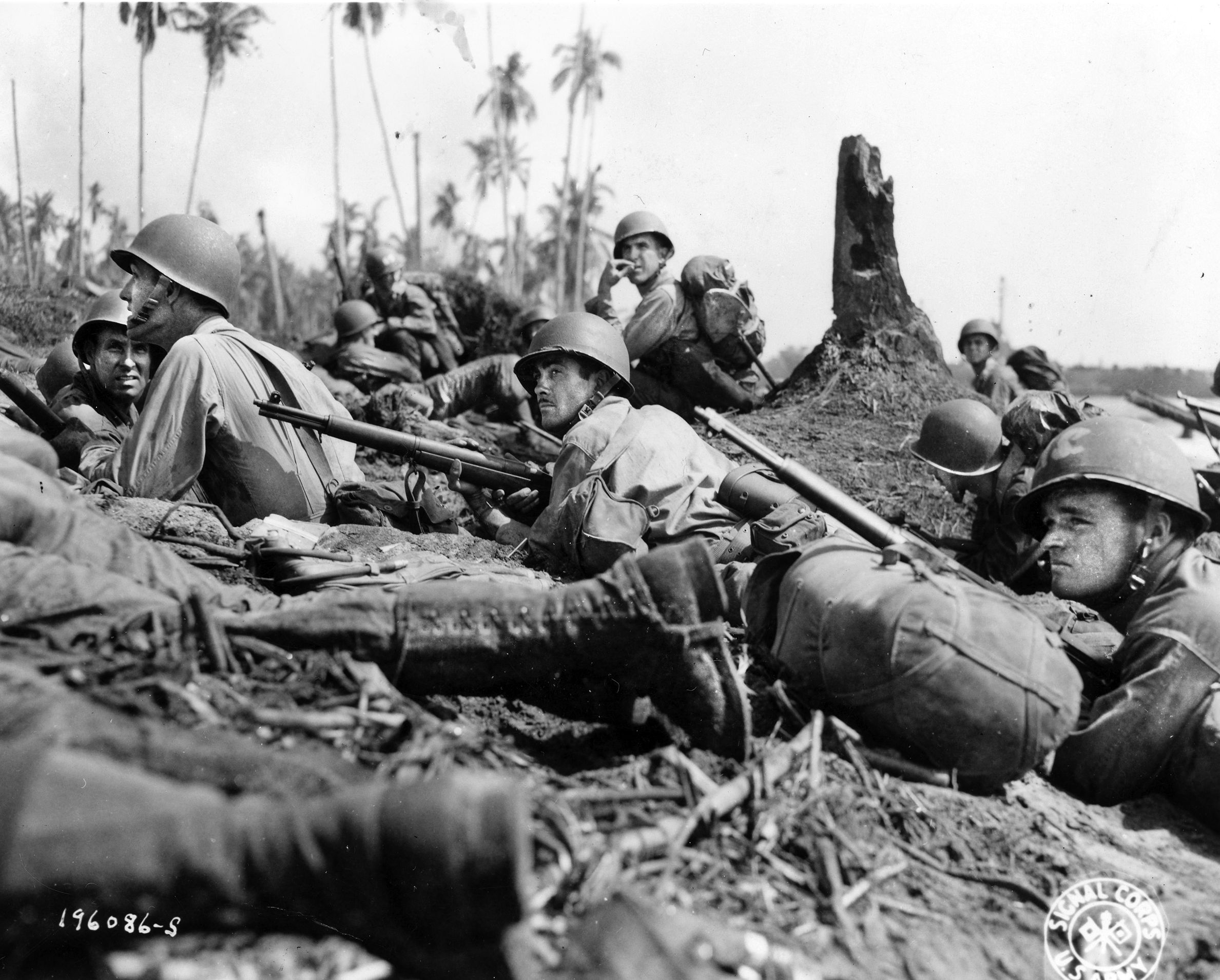
Believing the Japanese propaganda of the great “victory” off Formosa, a stunned Makino signaled Yamashita from his division headquarters under heavy American fire: “Enemy fleet approaching. Not clear whether they are sheltering in Leyte Gulf from bad weather or are escaping from the Taiwan battle.” The message was his last. American shells shut down his radio.
At Tacloban, MacArthur kicked at the corpses of Japanese troops and identified them from their badges. “The 16th Infantry,” he said. “They did the dirty work on Bataan.” After that, he resumed inspecting the battlefield, walking unconcerned across Tacloban airfield as American and Japanese troops were fighting for control of it, easily in range of enemy snipers.
As night fell, the Americans had secured their beachhead, but the remaining Japanese began annoying the GIs in the dark with mortar and machine-gun fire, pestering a position held by 3rd/34th and Private Harold Moon, a company screw-up who had spent time in the stockade.
Well supplied with a Thompson sub-machine gun and grenades, Moon stood off repeated Japanese attacks and called down coordinates of enemy positions for GI mortar fire. When a Japanese platoon charged his position, he emptied his magazine, killing 18 enemy soldiers to halt the attack. He hurled a grenade at a machine gun on his right, but the machine gun got him first.
The fighting went on until a 4 a.m. bayonet charge by Moon’s platoon finally broke the Japanese. Among the GIs who took over the ground was Hoffrichter, who found more than 200 Japanese dead lying near Moon’s corpse and his foxhole. Moon received a posthumous Medal of Honor.
The invasion of Leyte had been a great success for the Americans: on the first day, they had a secure lodgment at a cost of 55 dead and missing, 192 wounded. But supplies were a big problem. As had happened at Guadalcanal, insufficiently large shore parties unloaded supplies that had been poorly loaded, and the beaches became jammed with 1.5 million tons of equipment—all of it unable to be moved anywhere quickly on an island lacking metal and concrete roads.
Meanwhile, the Japanese—stunned to find the reports of victory were false—scrambled to cope with the invasion. Yamashita had reached Manila only 10 days before the blow on Leyte fell and barely had time to summon the staff officers he wanted. Among them was his new chief of staff, Lt. Gen. Akira Muto, who came from Sumatra.
Leyte quickly became the epicenter of the greatest naval battle in history. The Imperial Japanese Navy flung nearly every ship and plane it had at the Americans, and the three-day whirlwind of naval fighting that ensued had a little bit of everything: daring submarine attacks on advancing Japanese cruisers; massive air strikes that sent Japanese battleships and carriers to the bottom; the last “Fire-Away Flanagan” battleship duel; the first use of kamikazes; and a heroic stand by tiny American destroyers and escort carriers against the world’s biggest battleship that turned the tide. When the Battle of Leyte Gulf was over on October 25, the Imperial Japanese Navy was a spent force, and the U.S. Pacific Fleet dominated its namesake ocean.
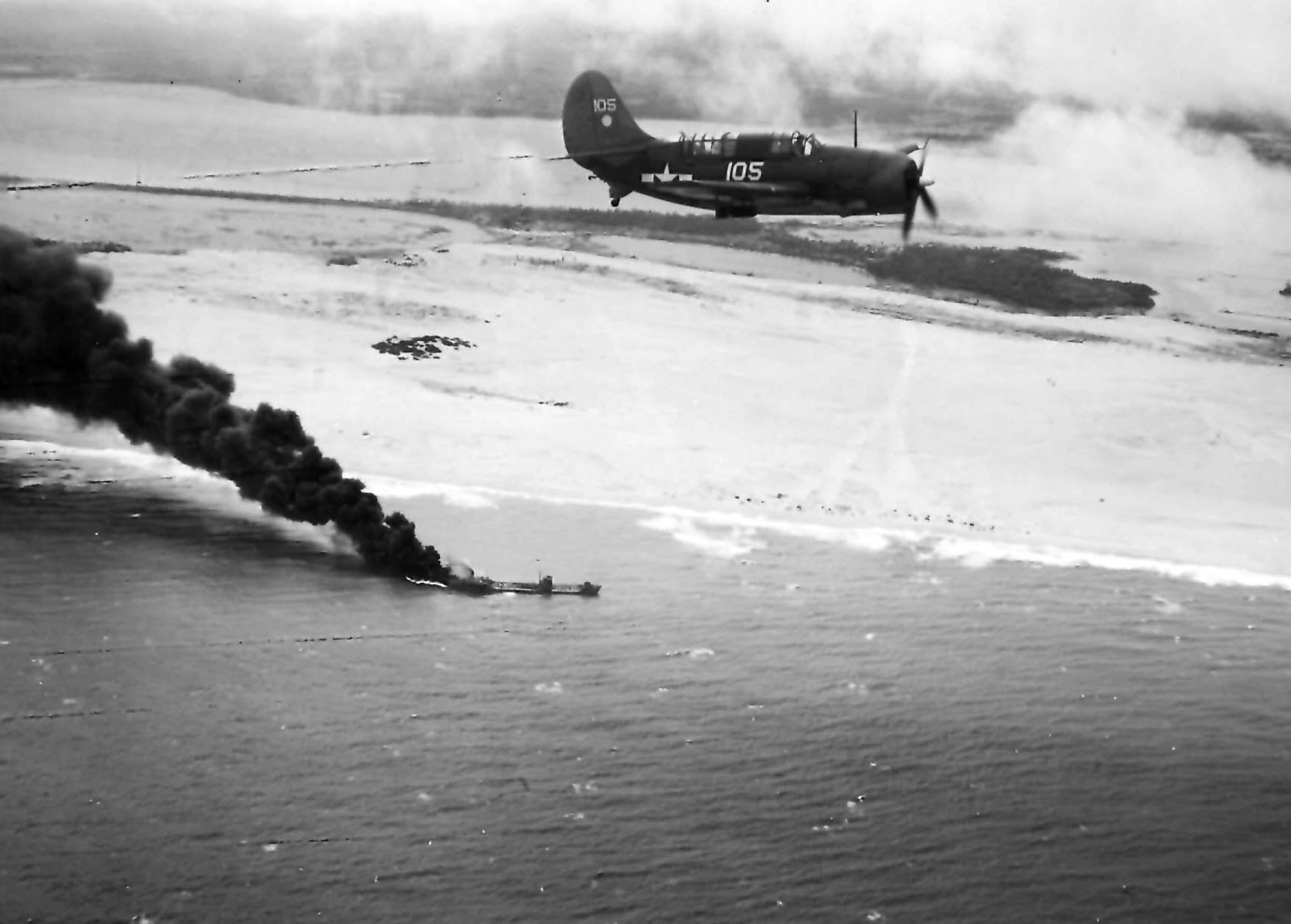
Meanwhile, Yamashita, Muto, and Terauchi convened around maps on October 20 at Fort McKinley to figure out how to respond. They presumed that their navy and airmen would wipe out the U.S. Navy, but the situation was grim on Leyte. Makino could not report on what was Jgoing on because so many of his units had been shattered.
Now Imperial General Headquarters ordered Yamashita to make the major defense of the Philippines in Leyte and reinforce Suzuki’s 35th Army with every man available. Yamashita pleaded with Terauchi to use his power to protest the order. Shipping troops to Leyte while American planes and submarines guarded the approaches would be a useless, suicidal measure that did not meet bushido standards. Yamashita wanted to fight the decisive battle on Luzon, where he had the bulk of his troops and supplies, his own headquarters, and the very same difficult terrain that had enabled MacArthur to hold out for months in 1942.
Terauchi vetoed Yamashita’s protests. Muto found the theater commander “in extremely high spirits and optimistic” and ordered the 14th Area Army “to totally destroy the enemy on Leyte.”
Yamashita passed that on to Suzuki, who was splitting his lone division into the pompously named Southern and Northern Leyte Defense Forces, more to sound aggressive and conceal weakness than anything else—the 16th Division was close to collapse.
True to his nature, Krueger had his men consolidate their positions and build up supplies, while engineers slapped steel matting on the Dulag and Tacloban airfields. This did not work so well: as soon as the matting went down, heavy rains came, turning the airfields into quagmires. The U.S. Army Air Forces had difficulty operating their Lockheed P-38 Lightning fighter bombers from them. Kenney turned to the Navy for help, but it had problems of its own: the naval battles had put the 7th Fleet’s escort carriers in the dockyard and had worn out the aircraft and crew of Halsey’s 3rd Fleet carriers with attrition and fatigue. Halsey kept his ships on line, despite further kamikaze attacks and typhoons. Japanese planes, based in Cebu, Mindoro, and locations near Manila, were able to take to the skies and bomb U.S. forces without much interference.
Even so, the Americans advanced. The legendary 7th Cavalry Regiment of Little Bighorn fame cleared out Tacloban, accepted gifts from liberated Filipinos, and drove west, taking small losses. The 24th Division faced tougher fighting against Japanese troops who had mastered jungle camouflage, hiding in takotsubo, or “octopus holes,” their word for a spider hole—letting U.S. patrols go by, then ambushing them from behind.
The Americans advanced into the mountains west of Dulag and Tacloban and found tougher going and tougher defenders. Japanese Special Naval Landing Forces (their version of Marines) built a tunnel on Hill 522 that took two days to clear. Once done, U.S. artillery and navy forward observers took over Hill 522 to call in six-inch guns on the enemy.
As the GIs moved forward into thickening mountain jungle, they also battled leeches, fungus, and mosquitoes. The miserable conditions made it difficult to bring up water and food, which made the 100-degree heat more miserable. Every night it rained, and troops had to bail out foxholes to avoid drowning after they fell asleep. The Japanese had the same problems, only theirs were far worse—lacking many basic supplies, some of their troops were starving
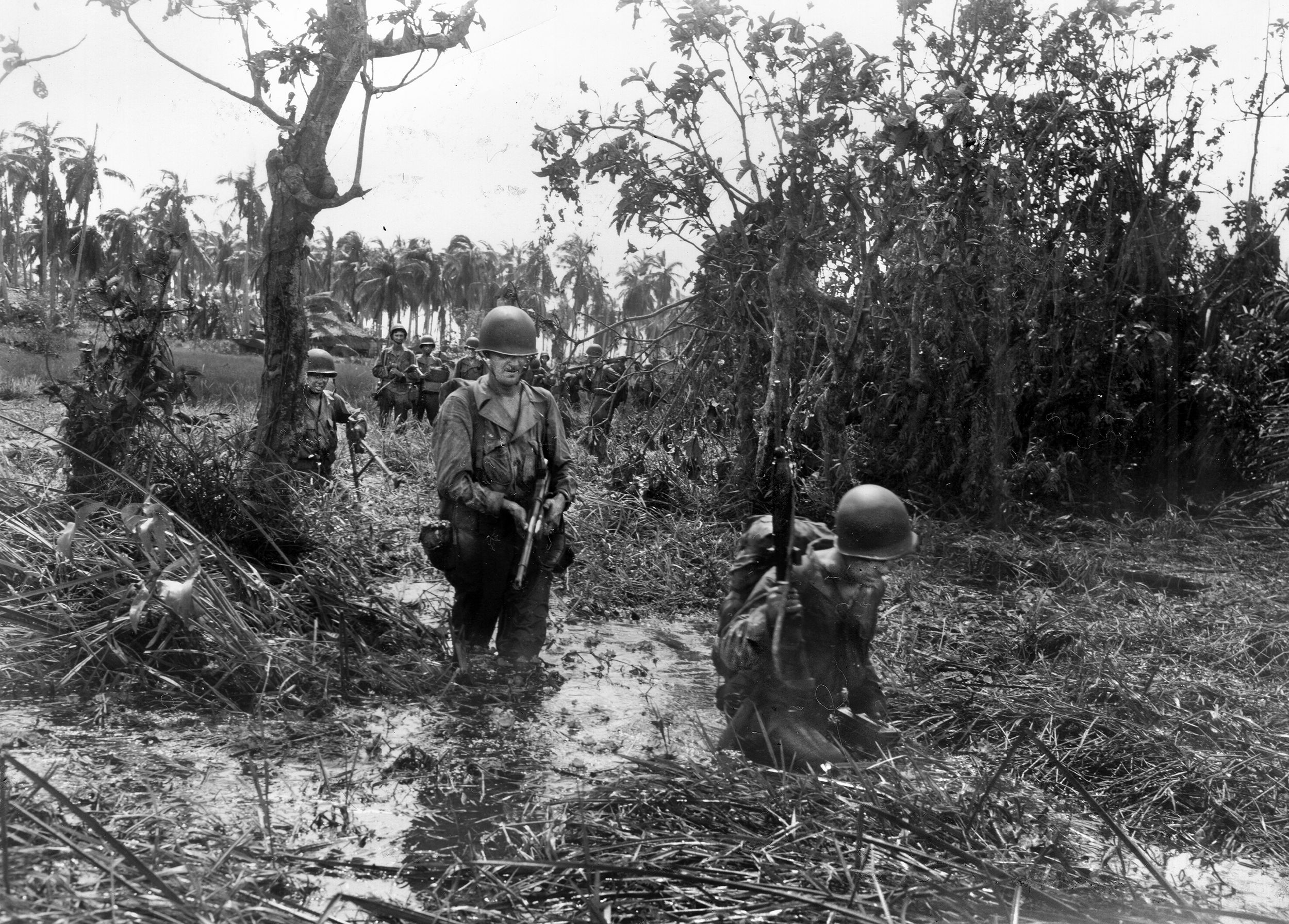
Unaware of their naval defeat, Suzuki flew to Ormoc on Leyte, where he told his staff, “We are about to step on the center of the stage. There is no greater honor or privilege. We don’t even need all the reinforcements they are sending us.” Actually, he did. The crippled 16th Division was barely able to hold the northern coastal town of Dagami.
But the two divisions coming in by sea, the 1st “Gem” Division for Ormoc and the 26th landing at Carigara, constituted some of Japan’s best troops. Lt. Gen. Tadasku Kataoka’s 1st Division’s battle honors included the Russo-Japanese War, and it had spent years fighting tough opposition in China. Behind them came portions of the 30th and 102nd Divisions, a total of 45,000 men.
The U.S. 24th Division drove up Highway 2 through rain and resistance to capture Jaro on October 29 and continued north to Carigara along the 12-foot-wide rock-and-gravel road.
The Japanese 1st Division arrived at Ormoc on November 1, its men wearing filthy, lice-ridden uniforms, but intact. Lt. Minetoshi Yahiro told his platoon leaders, “We have long been preparing for this day. The hour has come when we must use all our training and skills.” Corporal Kiyoshi Kamiko, a peacetime primary school teacher and wartime conscript, gulped in the fresh tropical air.
Suzuki gave orders to Kataoka to head north to Carigara, assemble there, and attack the Americans. A cavalryman and veteran of China, Kataoka knew plans fell apart and asked what to do if his division was attacked before Carigara.
“Proceed to Carigara,” answered Suzuki’s chief of staff, Maj. Gen. Yasiharu Tomichoka. “There’s nothing to worry about.”
Before the 1st Division could get moving, it had to endure an air raid by Consolidated B-24 Liberator bombers on the recently arrived transports. Col.Yoshio Miyauchi, commander of the 57th Regiment, watched a bomb explode the transport Noto Maru, which his regiment had just left. His men had survived, but his trucks, horses, and ammunition were burning on the ship.
The 1st Division advanced toward Limon under American bombing and strafing, seeking to outflank the 24th Infantry. Krueger reacted cautiously, aware that the Japanese move from the south could be accompanied by an amphibious assault from neighboring Mindoro. He ordered the 1st Cavalry to move up on the Gem Division while the 24th dug in.
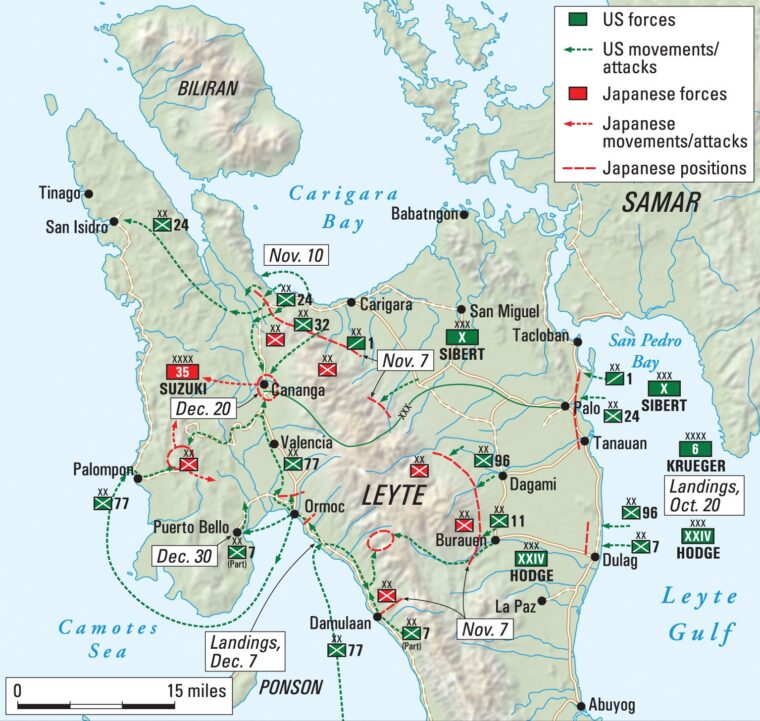
In the south, the 7th and 96th Divisions headed for Dagami, the stop before the ultimate prize on Leyte’s main west coast: Ormoc.
To the north, the 24th Division faced an impending Japanese counterattack while trying to move forward. The 1st Cavalry took over positions from the battered 24th. Miyauchi’s men advanced past wounded and bandaged men of the 16th who were hobbling back to the rear until they hit the highest point of Highway 2, a mass of cogon grass, jagged hills, and branching spurs—a perfect defense line. The Americans would call it “Breakneck Ridge.”
On November 5, Miyauchi told his men to jettison unnecessary items and stuff their haversacks with grenades and hardtack and put Kamiko’s company in the lead.
At the same time, the 1st Cavalry Division attacked, seeking the Mainit River bridge to Carigara beneath the ridge, Hoffrichter among them. The Japanese opened up on this advance with the usual machine guns and mortars, and Hoffrichter was ordered to fix his bayonet. He and his men moved slowly at first, then they began picking up speed. “I was never so frightened in my life. The nearest I had ever come to hand-to-hand combat was in the movies.”
The Japanese counterattacked, with Kamiko leading the assault. The Americans pelted his squad with grenades, which tore open geysers of dirt—Kamiko feared this was his last moment on Earth. An American machine gun opened up, followed by rifles and mortars, and Kamiko’s men answered to little avail. Kamiko’s men moved laterally and started digging takotsubo. Yahiro came up to see what was going on and found the other two squads were trapped, and Kamiko’s squad was the only unit holding the high ground. Despite the lack of water—the men found coconuts to drink from—the five men dug in and were ready for a dawn attack on the 6th.
During the night, the 4th Squad joined Kamiko’s crew, with platoon leader Warrant Officer Hakoda. At 9 a.m., the Americans opened fire with machine guns. Kamiko ordered his men to fix bayonets and ready grenades. Hakoda yelled, “Charge!” and 4th Squad stormed into the murderous American fire. Hakoda was hit. “Take command,” he called to Kamiko. With the GIs nearly on top of them, Kamiko yelled, “Fire everything you have!”
They did so, and amid the close-quarters battle, a shell screeched over and hit the Americans, followed by two more. It was a Japanese fieldpiece that had finally made it into position, and the shells silenced the American machine guns and stopped their advance for the moment.
The 1st Cavalry tried again with more machine-gun fire, their riflemen charging up the hill. Kamiko’s men and artillery greeted them with a fusillade, which sent the GIs tumbling down the hill, dying or retreating.
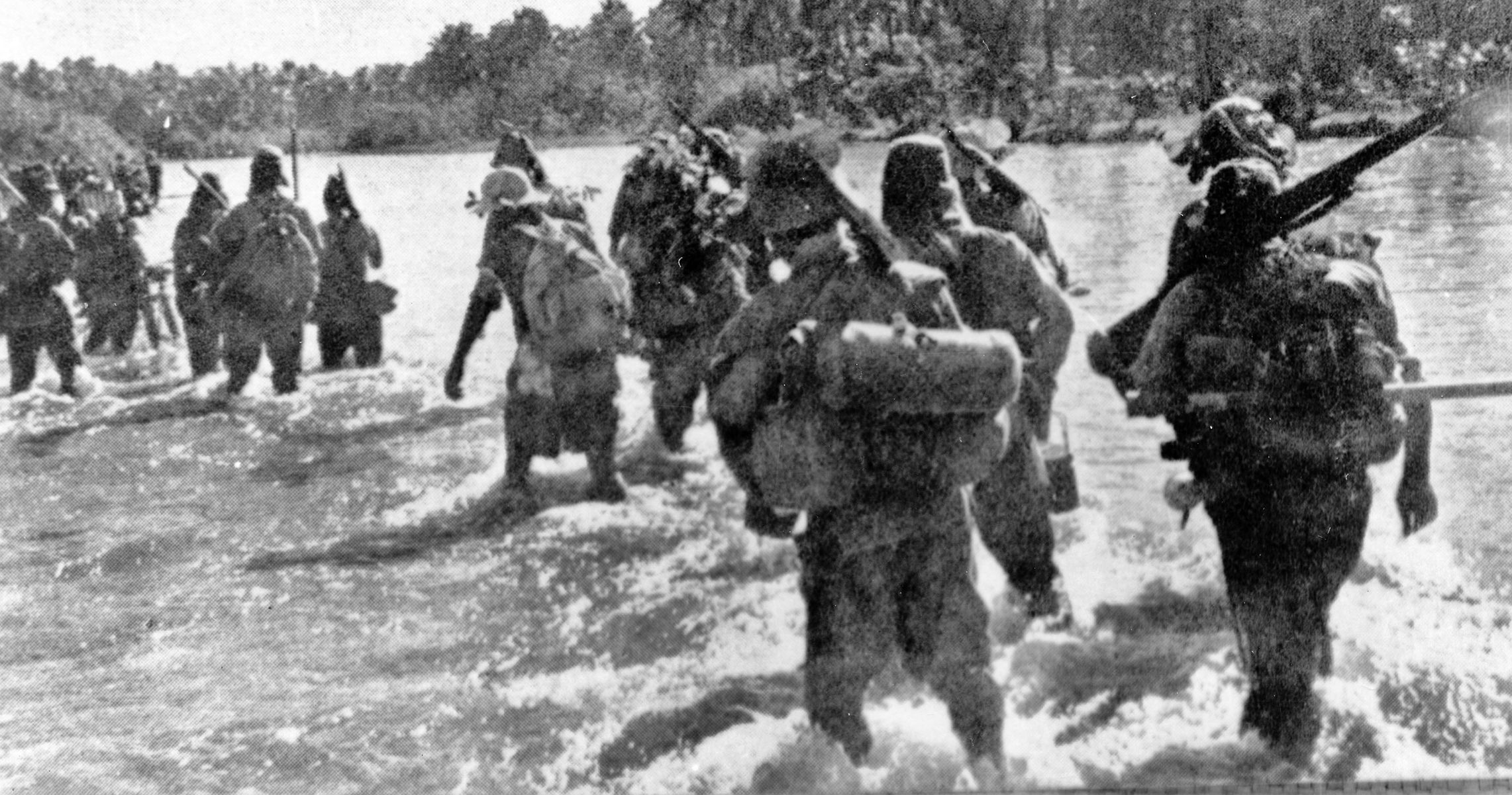
The Japanese renamed that portion of Breakneck Ridge “Yahiro Hill,” but that did not lessen the determination of the Americans to take it. Once again the 1st Cavalry attacked Yahiro Hill, and once again the 1st Cavalry wavered. Yahiro’s men held the ground, although only 25 soldiers were left.
For Major General Franklin C. Sibert, his X Corps’ inability to take Breakneck Ridge was becoming frustrating. So were casualties: one company was down to one officer and 85 men, even though the Japanese had lost nearly 2,000 men. Krueger addressed that problem by sending for planned reinforcements, in this case, the 32nd “Red Arrows” Infantry Division, veterans of New Guinea. The 77th “Metropolitan” Infantry Division, composed of New Yorkers, and paratroopers of the 11st Airborne Division, also joined them in the fight.
The 32nd slogged through the heavy rain and mud to the Carigara Valley. Meanwhile, the 24th and 1st Cavalry attacked on November 8, amid typhoon-whipped rain and winds. Heavy artillery competed with real thunder. Infantrymen struggled with inaccurate maps as well as the rain and the Japanese. Up top, Kamiko and his men were equally soaked and miserable, plus short on ammunition and food. Yahiro ordered his men to direct steady fire on the advancing Americans, which held them back until they heard the rumble of a Sherman tank behind them—they were surrounded.
Two of Kamiko’s men scrambled down with a satchel charge and placed it under the tank. The charge went off, forcing the tank to retreat, but Kamiko still faced attacks to his front. An American grenade rolled down the hill and into Kamiko’s takotsubo. He figured it was the end, but the grenade fizzled out.
Even so, the Japanese did not have much left, with so many of the men wounded. Sergeant Noshio Yoguchi, a veteran who had fought since 1938, sat bleeding profusely from a right thigh wound. Unable to move, he tried to commit hara-kiri by pointing a pistol at his temple, but it had jammed because of the mud.
By now, the Americans were practically on top of Noguchi’s position, and he huddled in bloody water, amid dead comrades, hoping not to be captured. The GIs took over the area near him and dug their own foxhole. In the dark, he crawled down a steep incline, past the bodies of more dead comrades, looking for water, until he was exhausted and fell asleep.
The battle for Breakneck Ridge went on with both sides suffering misery. On November 10, the Americans tried again, sending two battalions of 1st Cavalry against the mass of shell holes. Yahiro’s company was down to a handful of men. When they finally ran out of ammunition, Kamiko yelled in fury and futility, “Charge, charge!” in English.
Yahiro’s assistant then shouted out the command to “turn around and advance,” the Imperial Japanese Army’s euphemism for “retreat.” Kamiko had heard the order on the drill field, but never in battle. The Americans took advantage of the hesitation to pour fire at Yahiro’s company, hitting Yahiro in the throat.
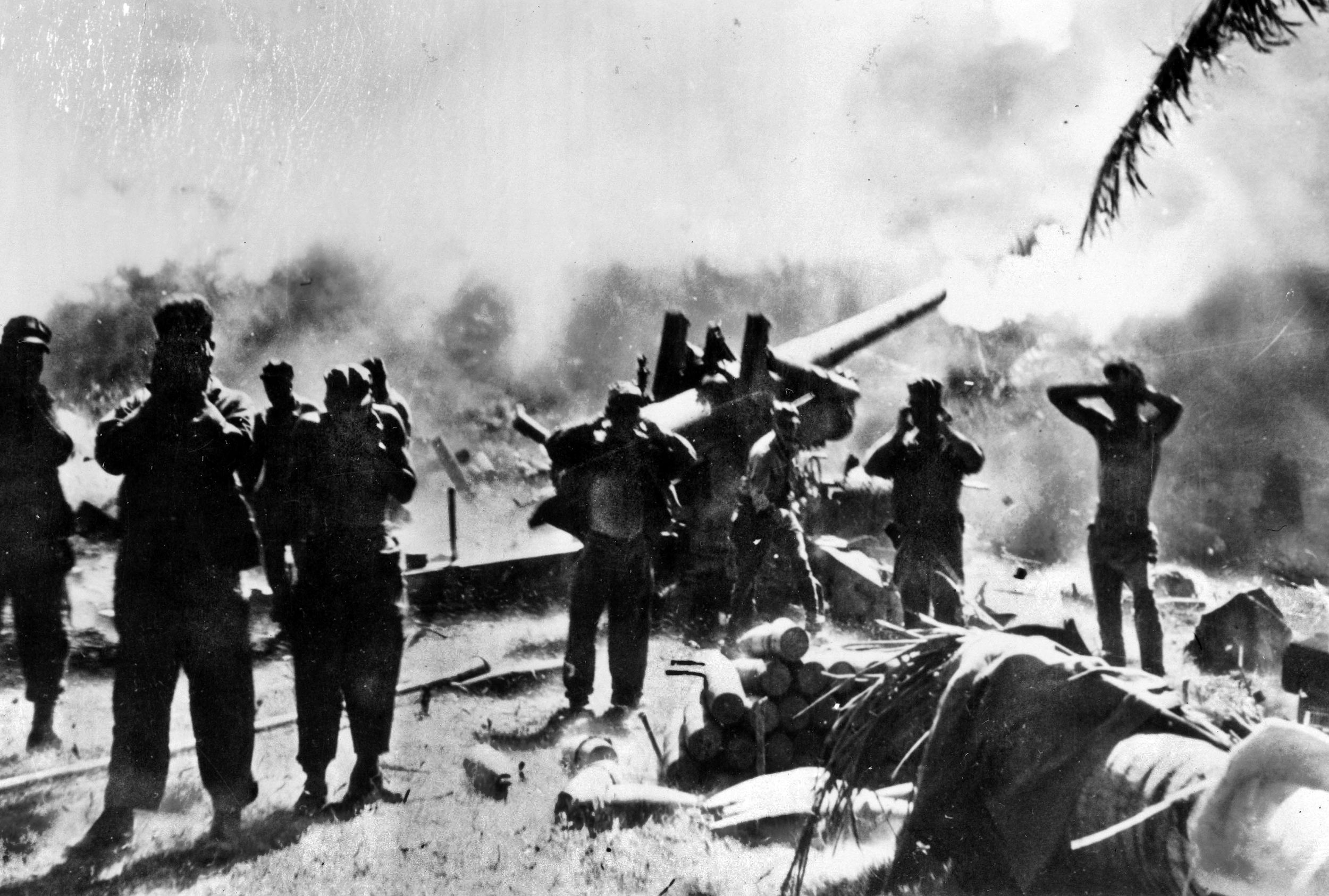
Now Kamiko was in charge, and it was clear he and his men were doomed. They could not retreat, so Kamiko ordered his men to scoop up all the grenades and attack, hurling them at the Americans. The men attacked, but it was hopeless. Kamiko realized the assault would lead to a meaningless death for his men. “Follow me!” he yelled, and he led the men down the hill toward Highway 2 and back down the road, pursued by American mortar and machine-gun fire.
The richness of American resources was starting to pay off. Mountainous terrain had interfered with radar, 34 inches of rain turned airfields into quagmires, but Halsey kept his carriers in position despite attrition, fatigue, and kamikaze attacks to provide both ground support and attacks on Japanese convoys headed for Ormoc. U.S. Army engineers, many of them African American, performed heroic feats to create and maintain roads and airfields, while Filipino porters carried supplies to the front and wounded men back.
The Japanese found that effort harder going. Their bases were shielded from monsoons, but not from the occasional earthquakes that affected both sides. They also lacked trucks, bulldozers, and a supportive Filipino population.
The 7th and 96th Infantry Divisions, reinforced by the 11th Airborne, reached the west coast city of Baybay on November 1 via an unguarded trail that crossed Leyte’s narrow waist, but the usually determined Japanese resistance, aided by the mountainous terrain, held it back. The XXIV Corps Commander, Maj. Gen. John R. Hodge, proposed sending a regiment of the 7th Infantry Division by sea to Ormoc.
Meanwhile, Yamashita became increasingly worried about the 35th Army’s desperate situation and Terauchi’s determination to fight the great battle on Leyte and not Luzon. Terauchi insisted that the American Air Force and Navy had been defeated—it was merely a matter of time before Krueger’s force was cut off and forced to surrender. Yamashita did not believe that.
Bolstering Terauchi’s argument was a landing of 12,000 men of the 26th Division, while another 10,000 men were also headed for Ormoc, and he believed those men would tip the balance. Yamashita tried three times to change his superior’s mind. At one of them, Yamashita’s chief of staff, Lt. Gen. Akira Muto, lost his temper and exploded at the field marshal.
No matter. Terauchi had the rank and the pull and was unimpressed. “We have heard the opinions of the 14th Area Army,” Terauchi declared, “but the Leyte operation will continue.”
Yamashita had no choice. “I fully understand your intention,” he said. “I will carry it out to a successful end.”
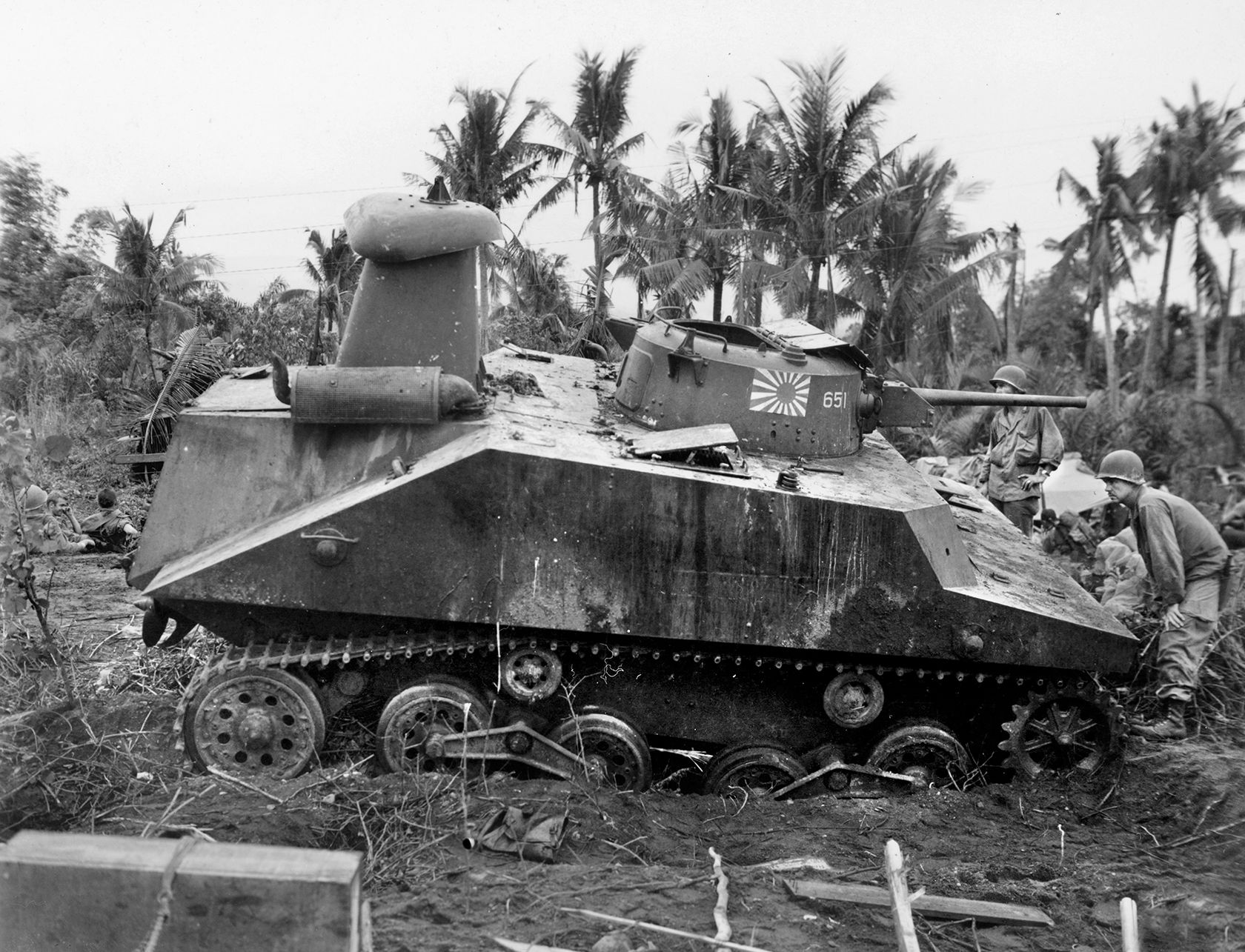
On November 11, the 11,000-man convoy arrived at Ormoc Bay and faced 200 planes from Halsey’s fleet. The six transports were sunk first, followed by four destroyers. The remains of the convoy headed back to Manila, losing two destroyers en route.
Terauchi shifted his headquarters to Saigon in Indochina. Yamashita was certain that Leyte could not be held. Terauchi, though, insisted that the 35th Army attack east across the mountains and retake the American airfields in eastern Leyte. Yamashita obeyed.
He messaged Suzuki on November 15 that the 35th Army would attempt to destroy the enemy on Leyte, but if more troops could not be sent “Luzon will become the main theater of future operations in the Philippines.”
The order confused Suzuki, who decided that the best defense was a good offense and ordered Kataoka to counterattack to hold Breakneck Ridge, while the 26th Division attacked over the mountains to take Tacloban. All available planes would be committed to a rare night Japanese parachute operation on the Burauen airfields.
Up on Breakneck Ridge, American tanks had broken through, and the 32nd Infantry Division began moving south toward Ormoc, relieving the battered 24th Infantry Division.
Now the Japanese launched Operation Wa. It began on the night of December 6 with four Japanese transport aircraft loaded with infantrymen equipped with demolition bundles trying to glide to an assault landing on the airfield around Burauen. The Americans knew the attack was coming, thanks to their code breaking efforts, and experts in airborne warfare, the 11th Airborne Division, the “Mud Rats of Leyte,” were waiting.
One plane crashed offshore, and an amtrac full of GIs investigated it, killing two Japanese and forcing the rest to swim into a swamp. The other three could not find their target.
After this, 51 Japanese transports roared over at twilight, and 350 men of Lt. Col. Tsunehiro Shirai’s 3rd Parachute Regiment jumped into battle over the San Pablo, Buri, and Bayong airfields. Their mission was to capture the airfields, destroy the planes and facilities, and then withdraw into the mountains to hook up with the advancing 26th Infantry Division and 500 men of the battered 16th Division plodding east over the hills.
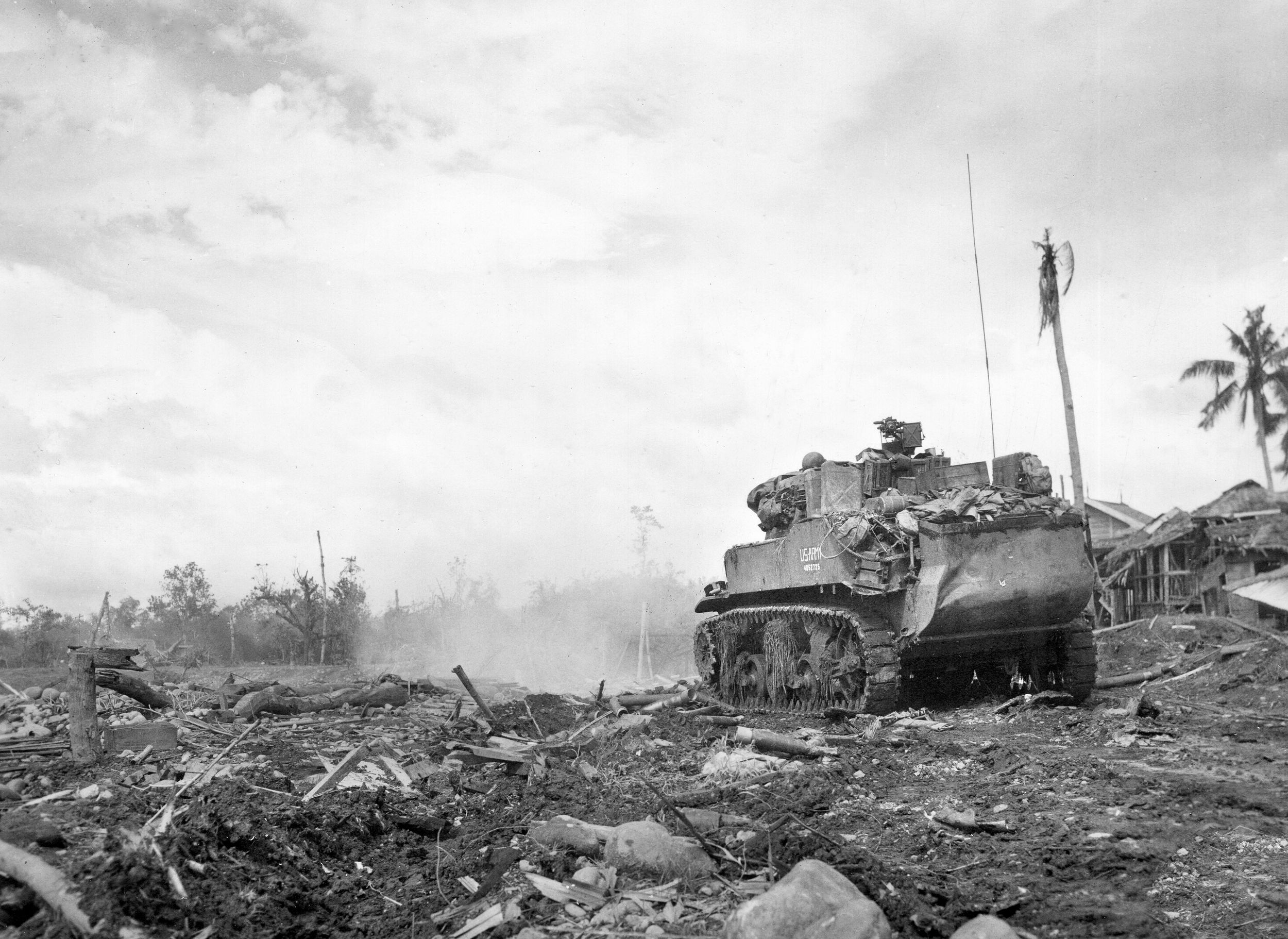
The Japanese paratroopers jumped just as the 11th Airborne headquarters men were lining up for evening chow, and division commander Maj. Gen. Joe Swing was sitting in a folding chair. All thought it was a drop of reinforcements and supplies until someone yelled, “They’re Japs!”
Swing wasted no time, yanking headquarters men, cooks, clerks, and bakers into defensive positions, and calling for the 187th Glider Infantry Regiment and the newly arrived 38th Infantry Division to reinforce him.
The paratroopers fought for four days in pouring rain. Some Japanese put on U.S. gear to confuse the GIs, but it was not enough. They were outnumbered and outfought by some of America’s best-trained men.
With Operation Wa crushed, the 6th Army attacked Ormoc simultaneously from the north and south on December 5. The 1st Division put up a determined defense, but the rest of the Japanese forces were exhausted and short of supplies.
Private First Class Elmer Fryar, 32, defined the 11th Airborne’s courage on December 7 in an attack toward Ormoc. A member of the 2nd/511th Parachute Infantry Regiment, Fryar dashed forward onto an exposed knoll and held off a banzai charge by Japanese troops. Helping a comrade to safety, he came upon his platoon leader aiding another wounded paratrooper. When a Japanese soldier leapt out, rifle at the ready, Fryar stepped in front of his CO to take the bullet. Fryar was awarded a posthumous Medal of Honor.
On the same day, the 77th Infantry Division, veterans of Guam, pulled off the kind of stunt that MacArthur liked: loaded in landing craft, the division landed on the west coast of Leyte, just south of Ormoc, and headed north up the road, menacing the main Japanese base, to virtually no opposition. There was only a single battalion of the 26th to hold the city. The rest of the 26th and 16th Divisions were trapped in the mountains and the jungle in their futile attack on the American airfields.
Suzuki had not expected this attack and had not even built beach obstacles. All he could do was order his forward divisions to retreat and call for 500 paratroopers of the 4th Parachute Regiment to be airlifted to an airfield eight miles north of Ormoc, but they didn’t arrive until dawn on December 8 and had to parachute into the jungle. The Japanese also sent in a battalion of the 30th Infantry Division to help out, plus they launched kamikaze attacks that sank the destroyer USS Reid and a destroyer-transport.
Meanwhile, Maj. Gen. Andrew Bruce’s 77th Infantry Division drove up the west coast of Leyte against a collection of Japanese rear-area men under a transportation officer, Colonel Mitsui. It was not enough, though. On December 10, the 77th entered Ormoc, finding a mass of blazing buildings and rubble.
The Japanese still had not given up, though. Following his orders from Terauchi, Yamashita sent in 3,000 men of the 8th Division and 900 tons of ammunition and supplies in five transports, guarded by three destroyers, two sub chasers, and 30 fighters. Marine Vought F4U Corsair fighters leaped upon them, sinking three transports. The remaining ships stood by to pick up survivors, but 700 men were drowned. When the convoy sailed again, more American planes sank another transport before the survivors could land at Palompon.

The last convoy consisted of a 400-man Special Naval Landing Force detachment under a Lt. Cmdr. Ito, with nine amphibious tanks and 20 mortars. Its two destroyers and two transports slipped through the American dragnet, heading for Ormoc, where the USS Coghlan opened fire and sank the destroyer Uzuki. The transports steamed in unaware that Ormoc was in American hands, and their captains were stunned when shells started whistling at them from the shore. “Don’t shoot!” the Japanese yelled, but one transport was swamped by shells. The other fled to the opposite side of the bay to unload the last supplies and men Suzuki would get, and the surviving destroyer sprinted for home
Eighty percent of the Japanese ships sent to Leyte had been sunk, but Suzuki had still received 45,000 reinforcements. Only 10,000 tons of supplies had made it, though, and it was now clear that the 35th Army’s position was untenable.
Yamashita already knew that, and now Terauchi had to realize the same. On December 17, Yamashita told Suzuki he would receive no more assistance. All Suzuki had left of the 65,000 men who had fought on Leyte were 15,000, most sick and hungry in scattered units, all weary and dispirited.
On Christmas Day, Yamashita sent Suzuki a final message. He could evacuate his troops to any other island in the Philippines, bidding him farewell. Suzuki tried to do so, managing to ship 1,000 men to Cebu, but the rest were trapped on the island, including Kamiko.
Having suffered relatively lightly–5,000 dead and 14,000 wounded–Krueger’s 6th Army was given the assignment of liberating the main island of Luzon. The Luzon defenses were substantially weakened by the hopeless defense of Leyte, and the Japanese struggle for Luzon would be even more hopeless–and horrific.
The mop-up campaign on Leyte was turned over to Lt. Gen. Robert Eichelberger’s U.S. 8th Army, and his troops would wage a harsh, slow, and unrelenting war against scattered, starving, but determined Japanese troops across the island. Only 5,000 Japanese troops would see their homeland again. Among those who perished was Suzuki himself, victim of an American airstrike in March 1945.
Suzuki was extremely distraught over his comprehensive defeat, but even more upset was Japan’s Prime Minister Marquis Kuniaki Koiso. He had publicly committed his government to victory on Leyte.
Koiso learned of the decision to abandon Leyte as he was headed for an audience with Emperor Hirohito and could only mumble to His Majesty that Japan had been defeated.
Kamiko and Nakamura fled the island in a Filipino outrigger, evaded an American PT boat, and reached Cebu and safety.
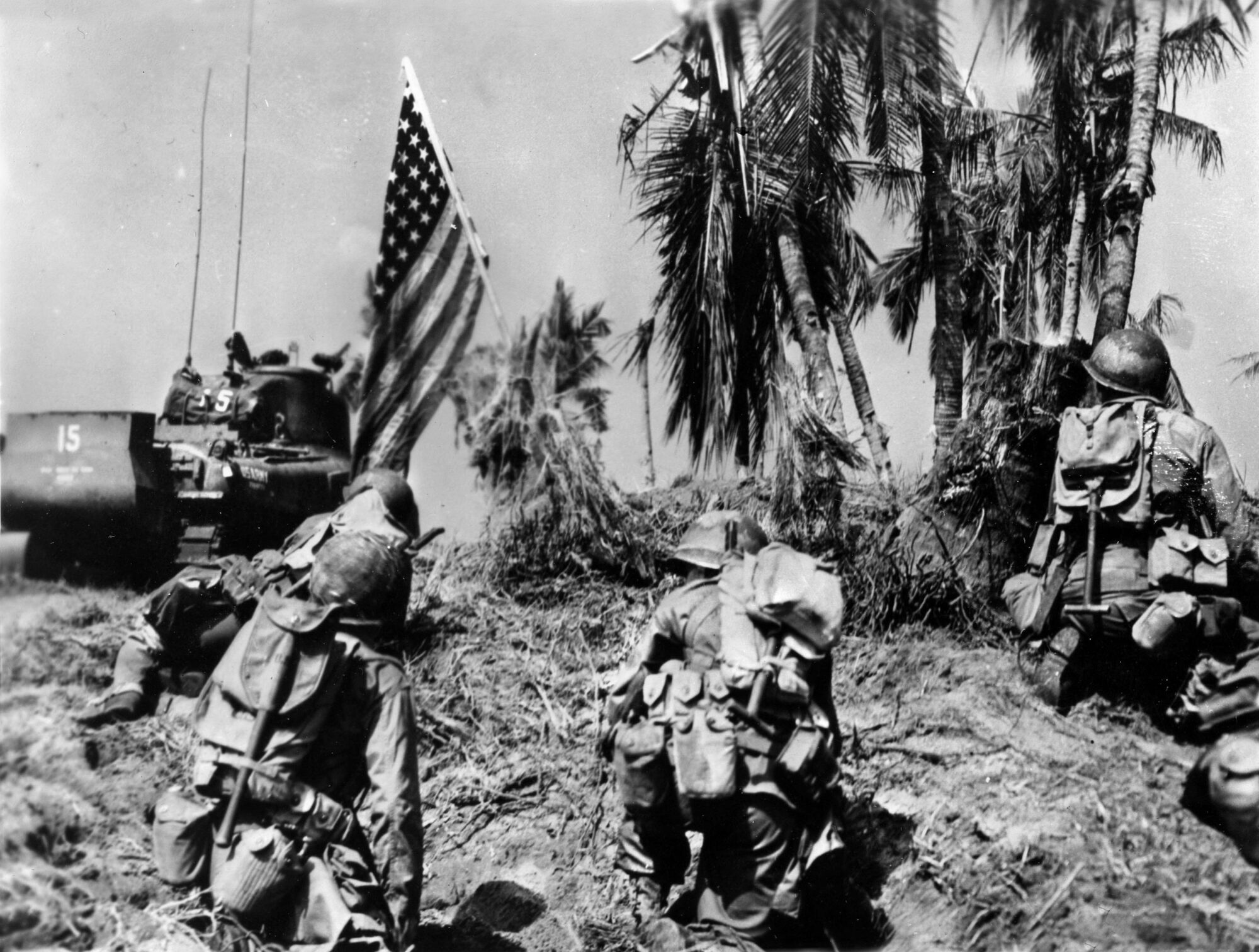
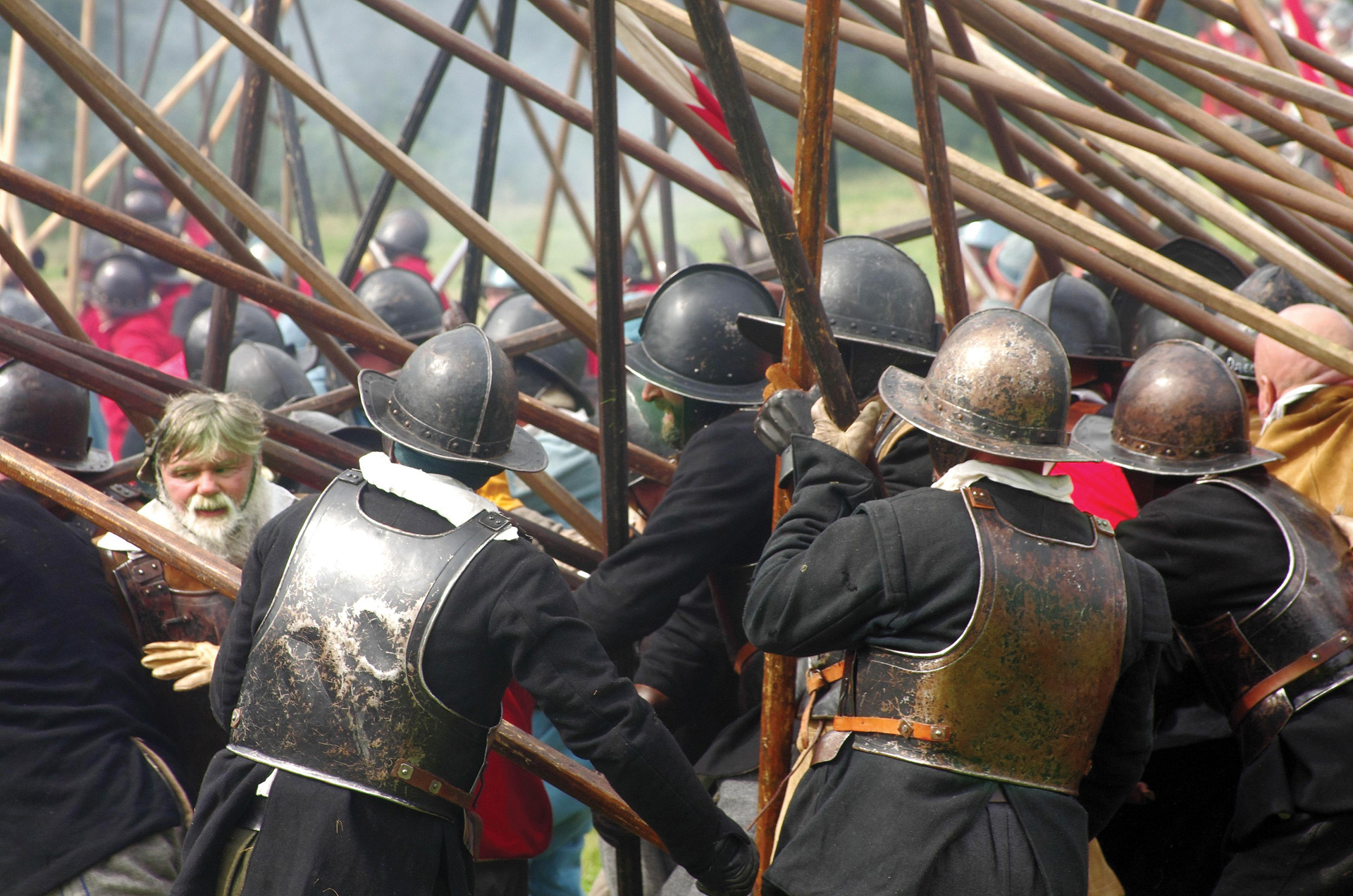
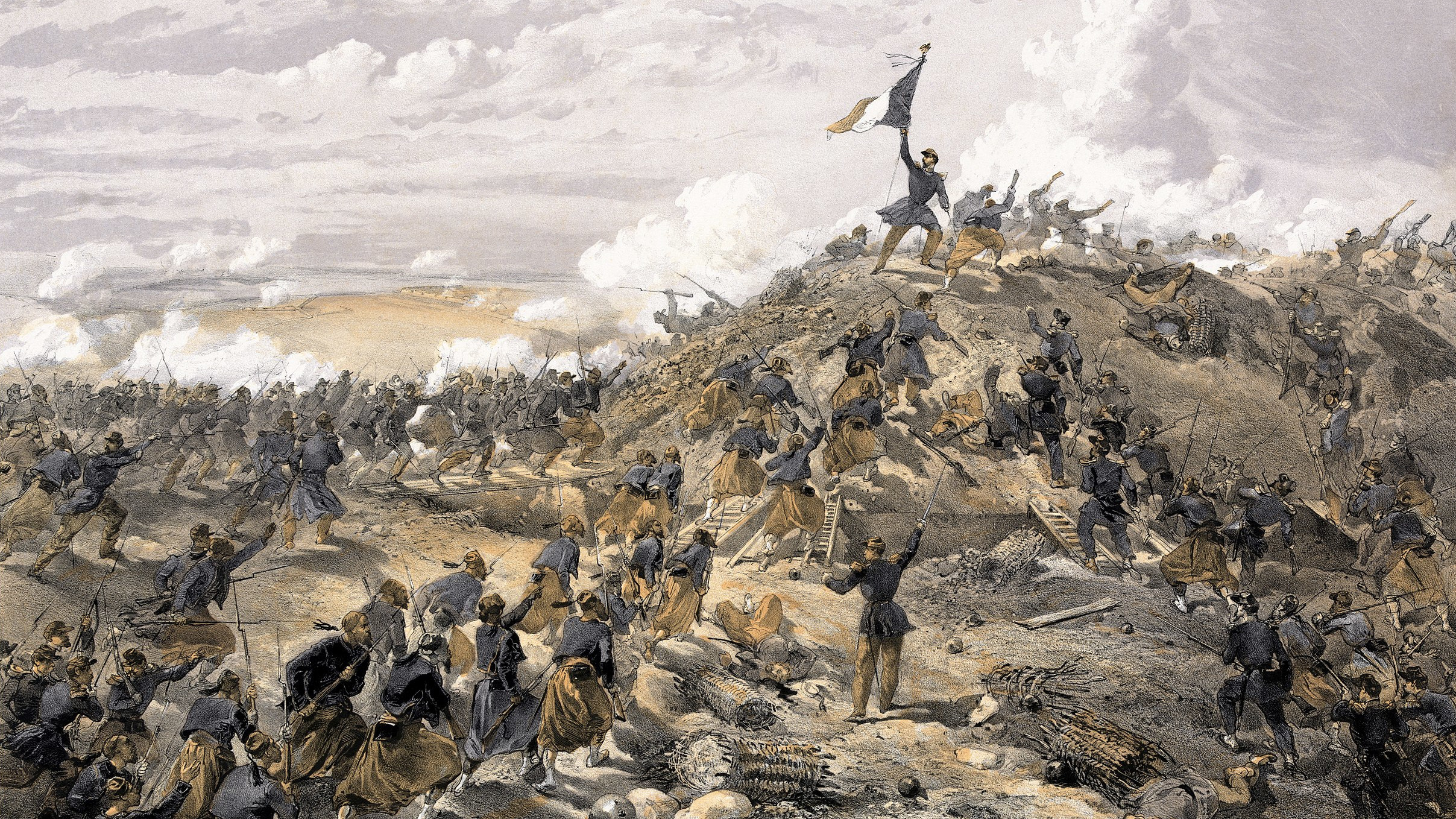
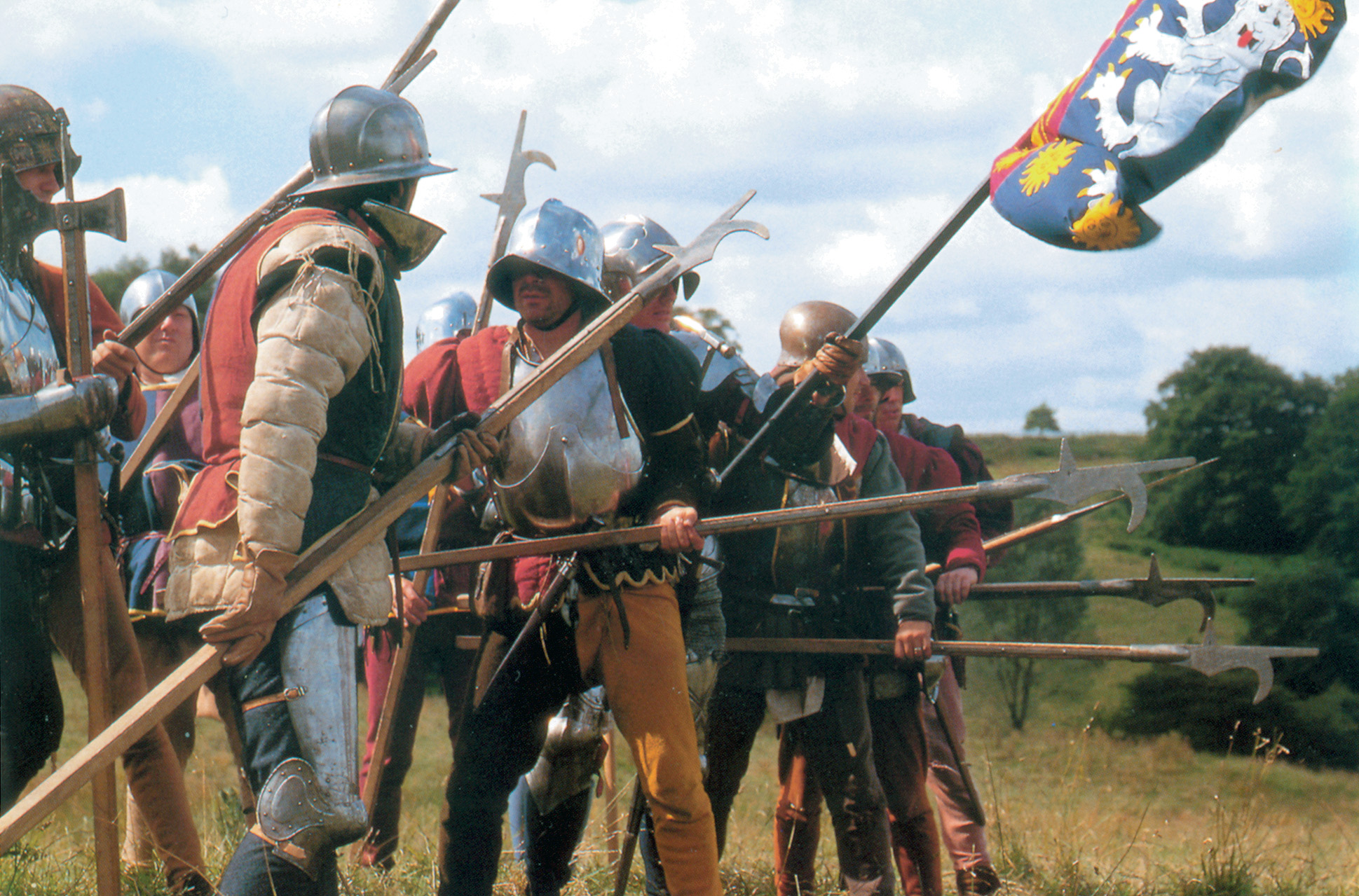
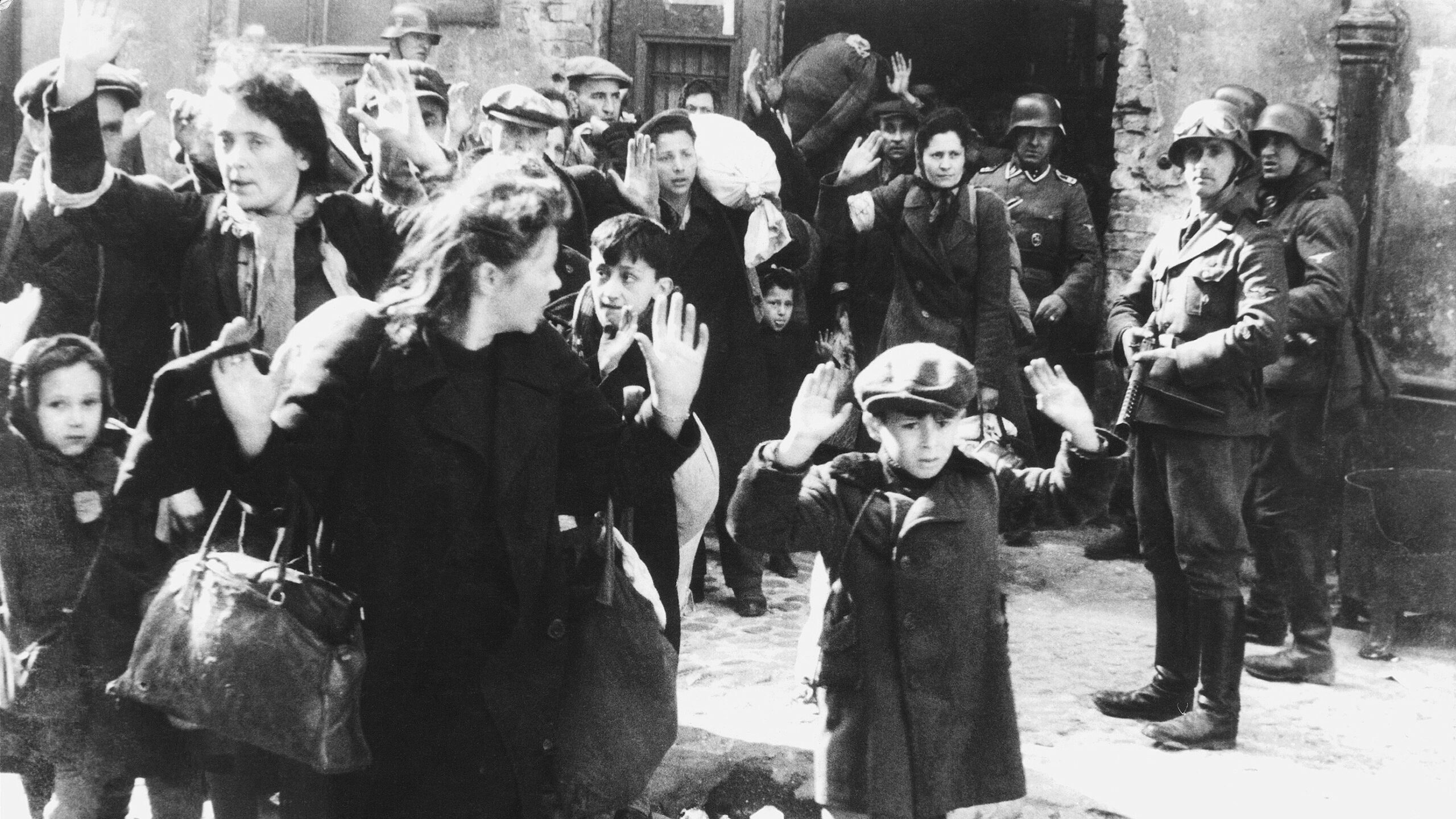
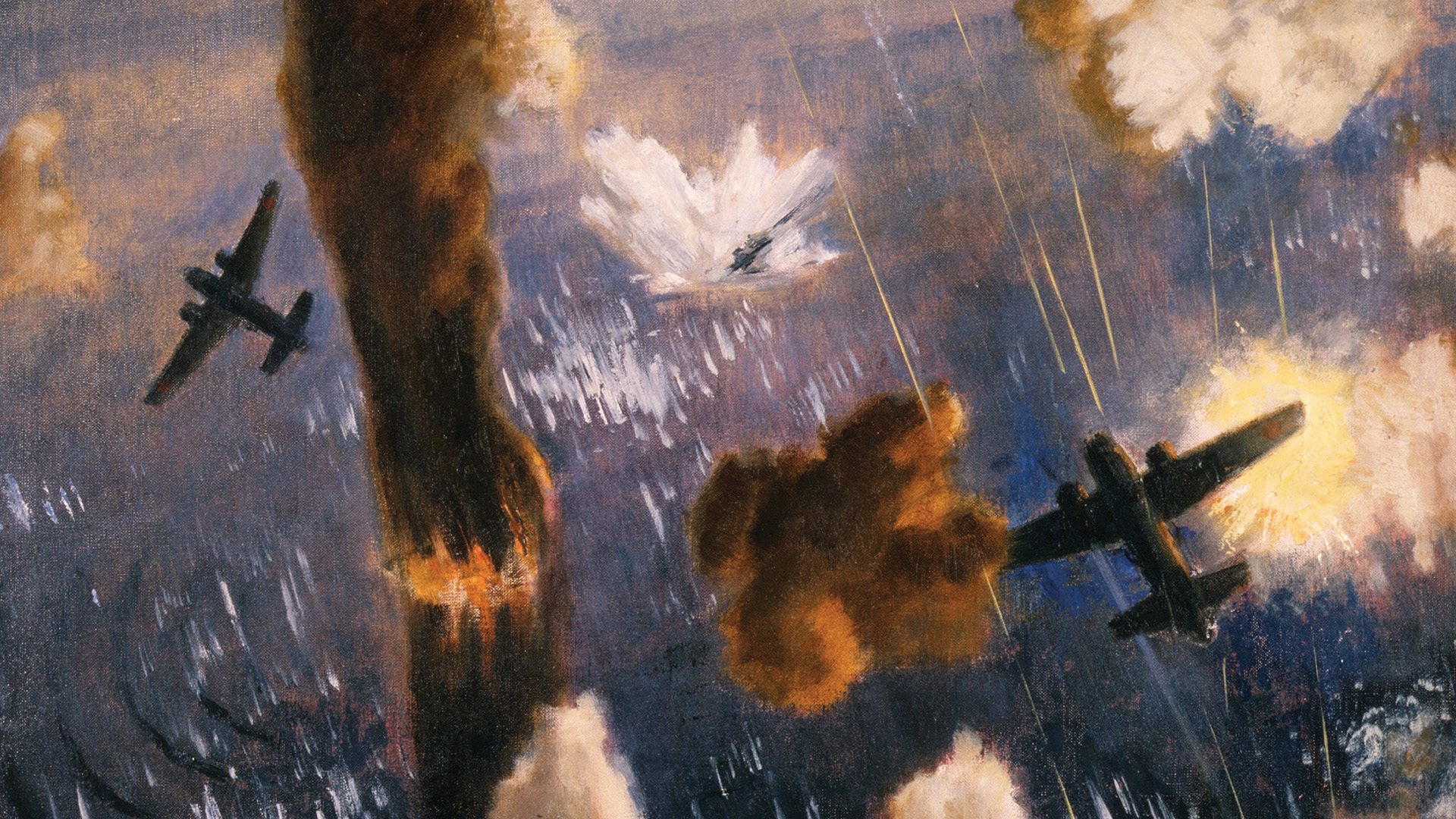

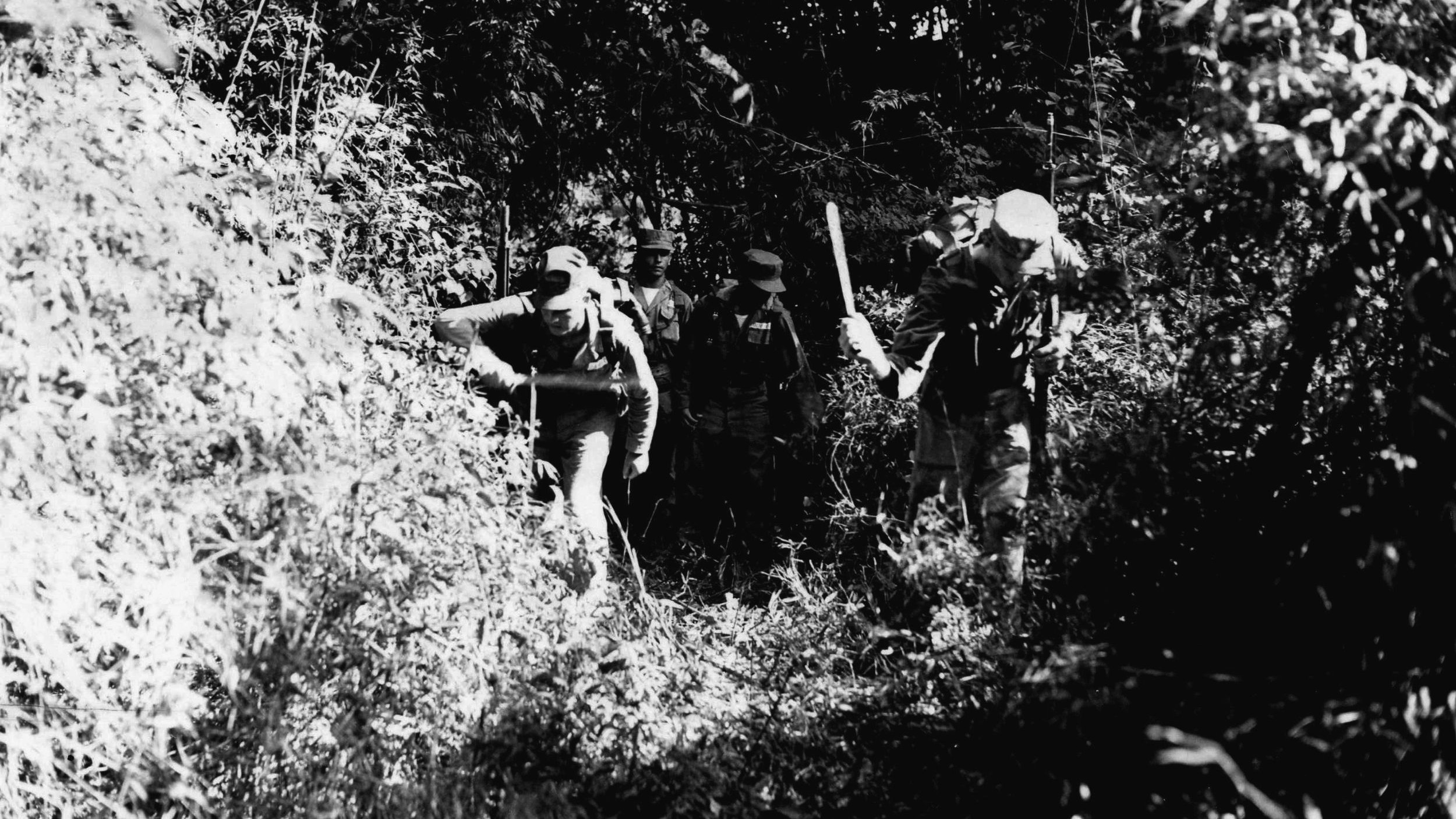
Join The Conversation
Comments
View All Comments